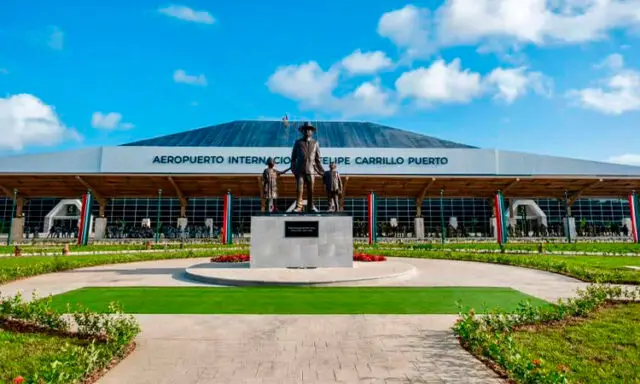Despite the advantages it offers in terms of capacity and connectivity, initial feedback indicates a lack of organization, it is far from the hotel zone, and mobility is absurdly expensive.
The Tulum International Airport, recently inaugurated with great expectations in the tourism industry, has already begun to receive criticism, especially from Colombia, due to its remote location from the main hotel centers.
This aspect has raised concerns among tourists and travel agencies, mainly due to the high costs of ground transportation required to travel from the airport to the most touristic areas. Despite the advantages it offers in terms of capacity and connectivity, initial feedback points to a significant challenge: its distance from the hotel zones and the lack of efficient transportation infrastructure.
Starting December 10, the Colombian airline Avianca will begin operations with three weekly flights between Bogotá and Tulum, using Airbus A320 aircraft that can carry 180 passengers, representing a significant increase in connectivity between Colombia and this new gateway to the Mexican Caribbean.
With more than 1,000 seats available per week, this new route responds to the growing demand for tourism between the two countries. However, some industry specialists, such as Fabricio Cojuc, an independent aviation consultant, warn that the airport could face infrastructure insufficiency issues, and travelers would have to deal with high ground transportation costs, particularly for transfers to the main tourist destinations of Tulum, Playa del Carmen, and the Riviera Maya.
One of the most controversial points is the lack of promotion of the airport’s proximity to the Maya Train, an infrastructure that could offer an alternative to reduce transportation costs and shorten travel times. However, so far, the dissemination of this connection has been limited, leaving many tourists without a clear vision of the mobility options they might have in the future.
From Colombia, travel agencies have expressed their concern, highlighting that the Tulum airport, although promising, presents immediate difficulties.
“The Tulum airport is very complex because it is very far away, and the transfer is complicated, the hotels are distant, and the transportation is expensive, but in the future, it will be very good, and I think Avianca is betting on that,” said a specialized source in the Colombian tourism sector to local media. This underscores the paradox that Tulum faces: a privileged location in terms of natural and cultural wealth but with significant logistical challenges.
On the other hand, the Tulum region remains one of the most attractive in the Mexican Caribbean. Jaime Alberto Borrero, general director of Grupo Over, highlighted the area’s benefits, emphasizing its rich hotel offerings ranging from small accommodations to large complexes with more than 900 rooms.
He also highlighted the value of the archaeological resources and virgin nature that continue to be the main attraction for international tourists. In this sense, both Avianca and Copa Airlines have bet on the region, anticipating sustained growth in tourism demand.
Source: Debate






